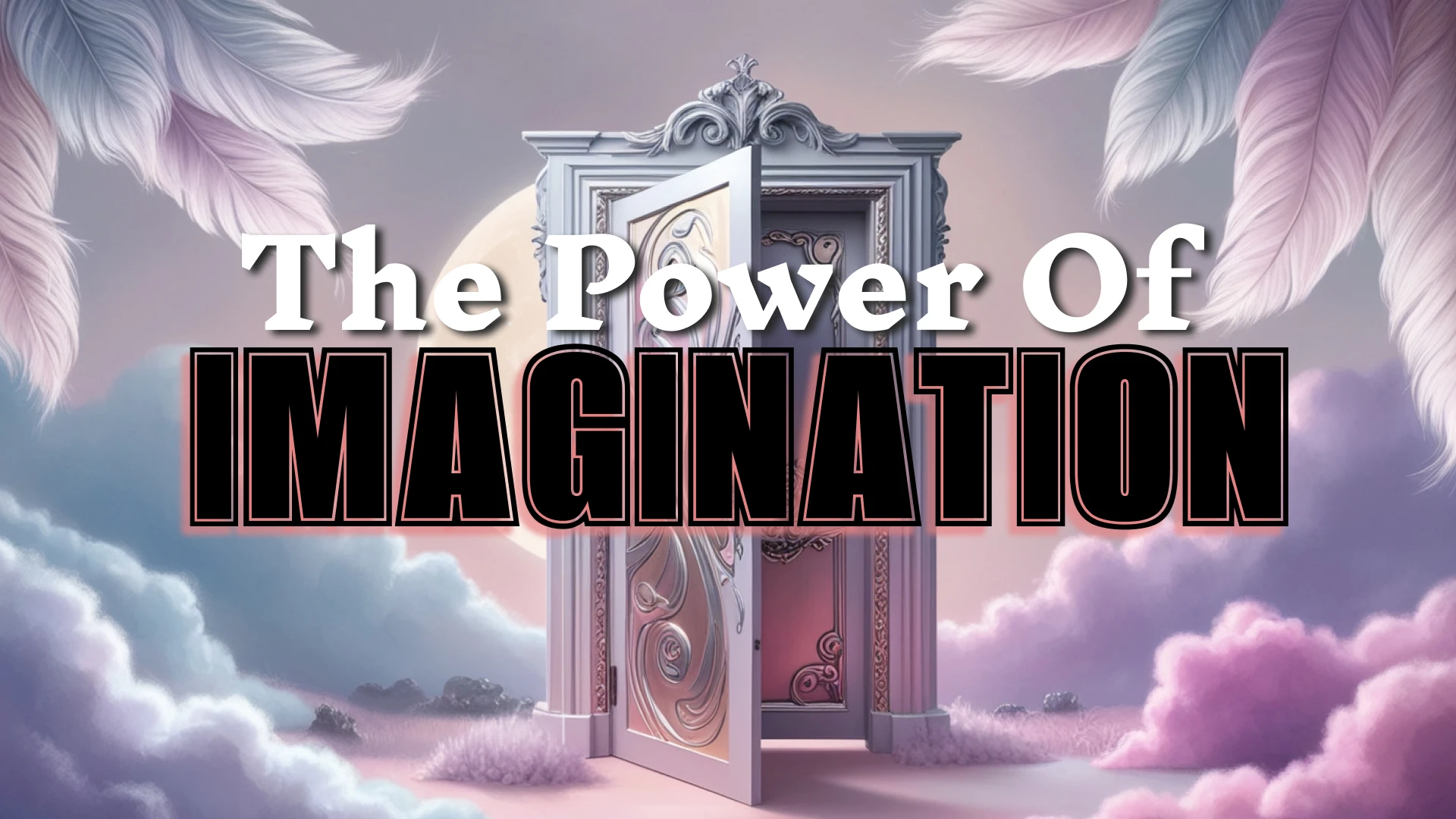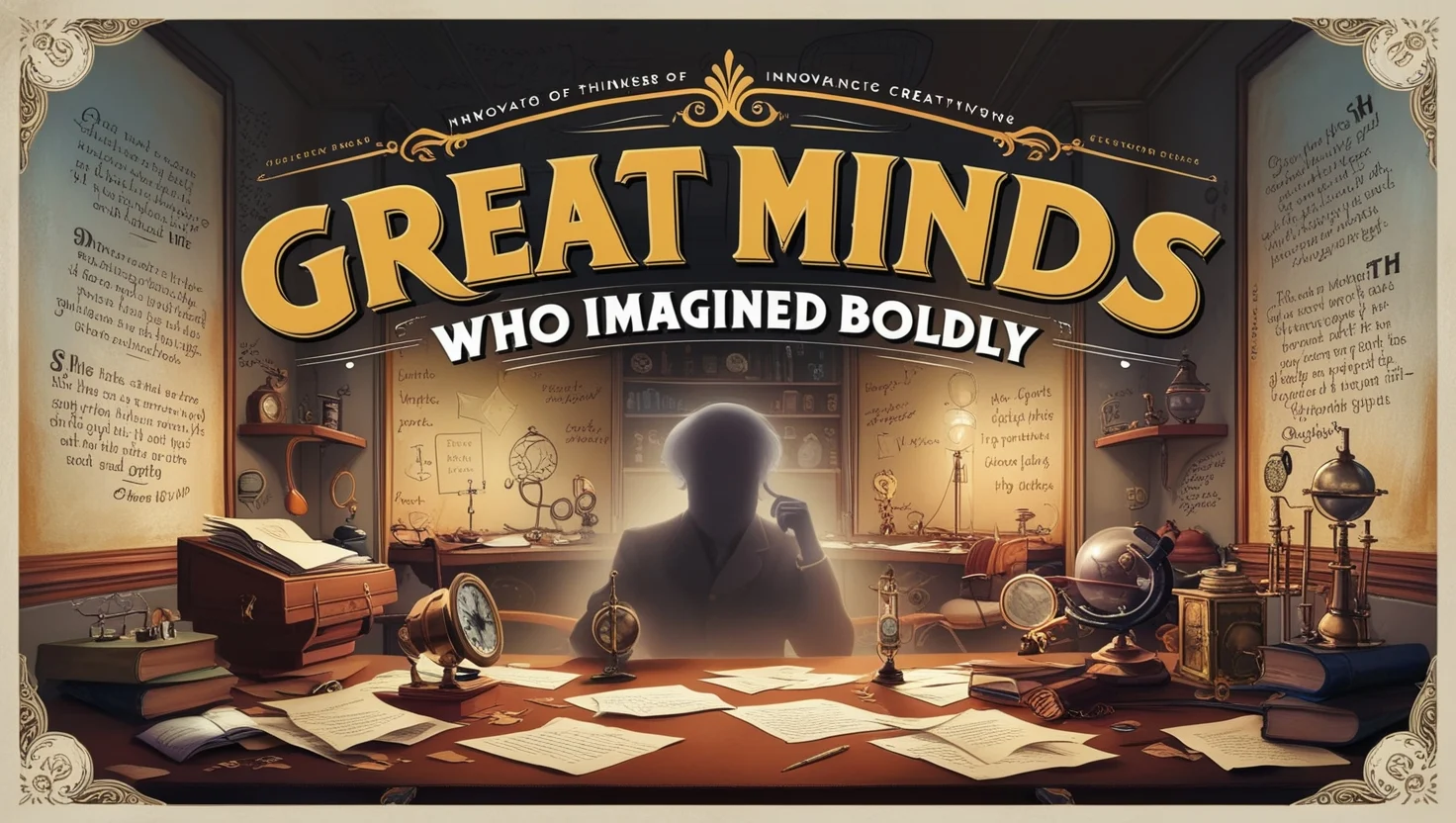
Imagination: The Foundation of Progress
introduction
Imagination is one of humanity’s most transformative abilities. It enables us to envision possibilities beyond the present, to explore realms beyond reality, and to create paths to progress. Every invention, work of art, and social movement began as an idea, taking root in the mind of someone who dared to dream. Imagination fuels creativity and innovation, allowing us to see the world not as it is but as it could be. Through imagination, we gain empathy by stepping into others’ perspectives and build resilience by envisioning solutions to the complex challenges we face. The power of imagination shapes our past, defines our present, and charts our future. When we nurture this incredible capacity, we open the doors to transformative growth, creating a world where progress, understanding, and boundless potential thrive. This exploration will delve into imagination’s profound influence on society, creativity, empathy, and future solutions.
Let’s start by talking about how imagination fuels progress.
1. The Starting Point of All Innovation
Imagination has always been the starting point for groundbreaking discoveries and advancements throughout history. Think about it: electricity, airplanes, and even the internet—all began as ideas in someone's mind. They were once mere dreams, concepts that seemed impossible or even outrageous to people then. Yet, those dreamers dared to believe in the impossible. They saw beyond the constraints of their reality, allowing themselves to imagine something entirely new. And because of that, they were able to spark changes that would reshape the world as we know it.
Imagine if no one had ever thought about flying. Humans would still be bound to the ground, missing out on the convenience of modern travel and the connections it brings. Without the imaginative leap that led to airplanes, we might never have considered the concept of global connectivity in the way we do today. Similarly, envision a world without electricity—a world stuck in darkness once the sun sets each day. It was someone's willingness to question, dream, and to imagine a better world that brought light into our lives and laid the groundwork for the technologies we depend on.
Imagination isn’t just for inventors or scientists. It's a quality that lives within each of us. Every time we envision a better version of ourselves or the world around us, we engage in the same thinking that led to these monumental achievements. The first step toward creating something new always begins with the courage to dream it. So, when you find yourself imagining something "out there" or seemingly unrealistic, remember that it's this very spark that leads to innovation and discovery. Imagination, after all, is the birthplace of progress—an invaluable tool that allows us to explore possibilities beyond the limits of our current reality.
2. Breaking Free from Limits
Imagination is what lets us break free from the limits of our current knowledge and technology, allowing us to explore new horizons and dream of what's yet to come. When we imagine that we are not bound by the restrictions of the present, we dare to consider possibilities that seem impossible at first. Take space travel, for example. When people first dreamed of venturing into space, it sounded far-fetched—even impossible, given the knowledge and technology of the time. But that wild idea sparked curiosity and drove generations of researchers and inventors to push past those limitations. Eventually, humanity made it to the moon, achieving something that once seemed like pure fantasy.
This is the power of imagination: it’s the freedom to move beyond what’s known and familiar. It’s the permission we give ourselves to dream without barriers, fueling curiosity and inspiring the advancements that make our world better. When we imagine, we create the foundation for discovery and innovation, and we unlock the potential to reshape our reality.
3. The Great Minds Who Imagined Boldly

History’s most influential figures—like Einstein, Curie, and Martin Luther King Jr.—were dreamers at heart. They didn’t just accept the world as it was; instead, they imagined how it could be and pursued those visions with a determination that ultimately changed the course of history. Take Einstein, for example. He had the curiosity to imagine what it might be like to ride alongside a beam of light, a simple yet profound thought experiment that led him to develop groundbreaking theories about space and time. This kind of imaginative thinking allowed him to view the universe in ways no one had before.
Marie Curie, too, dared to explore the unknown, making discoveries that would transform our understanding of radioactivity and open new frontiers in science and medicine. Martin Luther King Jr. dreamed of a world without racial segregation and injustice, a vision that became the foundation of his life’s work and inspired millions.
It’s a familiar pattern: first comes the dream, then the relentless pursuit of it. These visionaries show us the power of allowing ourselves to dream big and letting our imaginations shape a better reality.
4. Imagination as a Blueprint for the Future
Imagination isn’t just fanciful thinking. It’s like a blueprint, a rough draft that we can then refine and shape into a tangible reality. When you imagine, you’re creating mental prototypes, testing out different ideas and outcomes before bringing them to life. Think of it as mentally rehearsing possibilities. Every great leap in human history started with that mental rehearsal.
Unlocking Creativity and Innovation

Imagination is the soil where creativity grows. Here’s why they’re so closely connected:
1. Creativity Needs Imagination
Creativity and imagination work together. Creativity is the ability to make unique connections, and imagination provides the content for those connections. When you imagine freely, you’re drawing from a pool of ideas, experiences, and insights. This is where true creativity flourishes—where seemingly unrelated ideas meet to create something entirely new.
2. The “What If” Question
One of the simplest yet most profound questions is, “What if?” It’s the ultimate doorway to creativity. Imagine Steve Jobs asking, “What if computers were easy for everyone to use?” or the Wright brothers thinking, “What if humans could fly?” This simple question opens up endless possibilities, taking us from familiar territory into the unknown where new ideas live. It’s how creativity breaks away from the predictable.
3. Visionaries Who Made the Leap
Every visionary dares to imagine what others can’t see yet. Leonardo da Vinci, for instance, was sketching ideas for flying machines long before humanity figured out how to get off the ground. Similarly, Nikola Tesla visualized entire electrical systems in his mind before even touching a piece of equipment. They saw things not as they were, but as they could be. Creativity, fueled by imagination, is about making that leap into a future that others may not yet understand.
4. Turning Daydreams into Realities
Imagination is like daydreaming but with a purpose. It’s where you test ideas in a no-pressure environment, exploring what they might look like if brought to life. Creativity takes that daydream and says, “Let’s make it happen.” That’s where the magic lies: in translating these dreams into something concrete. It’s a process, often with failures along the way, but the result can reshape the world.
Developing Empathy Through Imagination
Let’s explore how imagination helps us connect with others on a deeper level.
1. Imagination as a Bridge to Understanding
Imagination plays a crucial role in helping us connect with others by allowing us to see the world from their perspective. When we take a moment to imagine ourselves in someone else’s shoes, we begin to understand their emotions, fears, and hopes. This simple act of imagining is where empathy begins. It helps us break out of our own experience and truly consider what someone else might be going through.
This mental leap fosters compassion and understanding because, by relating to others, we feel more connected and aware of their struggles and joys. That’s why empathy is often described as “walking in someone else’s shoes.” It’s an invitation to move beyond ourselves, to care, and to build relationships based on genuine understanding—something that can only come from the power of imagination.
2. Why Stories and Art Matter
Great literature, movies, and art have a unique way of tapping into our imagination and expanding our empathy. When you read a novel or watch a film, you're transported into another world, often seeing life through someone else’s eyes. The characters you meet become real in your mind, and their struggles, triumphs, and emotions resonate with you. Think about the characters or stories that made you feel something deeply or prompted you to see the world differently. It’s not just entertainment—it’s an exercise in empathy.
These experiences allow us to step outside our own perspective and understand the feelings, motivations, and circumstances of others, often in ways we wouldn’t encounter in our day-to-day lives. This is imagination in action. It helps us build connections to people, places, and situations far removed from our own, fostering a deeper understanding of the world and the diversity of experiences it holds.
3. Empathy Leads to Social Change
Imagination-driven empathy has an incredible power to inspire change. Visionary leaders like Nelson Mandela and advocates like Malala Yousafzai didn’t just accept the world as it was; they imagined a future where people treated each other with fairness and respect. Mandela envisioned a South Africa free from racial discrimination and dedicated his life to making that vision a reality. Malala, on the other hand, dreamed of a world where all girls had access to education, and she continues to advocate fearlessly for this cause.
When people are able to empathize with each other, they’re more inclined to come together, support one another, and fight for justice. Imagination fuels this empathy by helping us envision a world without the divisions of inequality and discrimination. It creates a shared vision of a better future, motivating us to take the steps needed to turn that vision into reality, one act of compassion at a time.
4. Empathy in Daily Life
Imagination doesn’t just create empathy for abstract issues or distant people. It’s equally valuable in our day-to-day lives. By imagining what a friend, family member, or colleague is feeling, we can respond with greater understanding and kindness. It’s a small act, but it can make all the difference in our relationships and overall happiness. Empathy, fueled by imagination, builds stronger connections and communities.
The Role of Imagination in Solving Future Challenges
Imagination isn’t just about personal growth or creativity—it’s essential for tackling complex global issues.
1. Why We Need Imagination for Big Challenges
Global challenges like climate change, inequality, and healthcare require a fresh way of thinking—traditional solutions simply won’t be enough to address these complex, interconnected problems. That’s where imagination comes in. Imagination lets us step outside existing frameworks and envision innovative approaches that go beyond what’s already been tried. Rather than waiting to react to each new crisis, we can use imagination to anticipate and plan for future challenges.
For example, by imagining a world with clean, renewable energy sources, we’re inspired to develop the technologies and policies needed to achieve that reality. Or, by envisioning universal access to quality healthcare, we set a goal that drives us to find creative solutions to make it happen. Imagination is like a roadmap that guides us toward the world we want to build. It helps us see the possibilities and make proactive choices that bring us closer to a sustainable, just, and healthy future.
2. Imagining a Sustainable Future
Take climate change, for example. To effectively combat it, we need to rethink our energy systems, transportation, and even the design of our cities. But how do we create a future where both humanity and nature can thrive? This is where imagination plays a vital role. It allows us to picture cities filled with green roofs, powered by clean energy, and connected by efficient public transportation. When we can clearly visualize this kind of sustainable future, it becomes easier to take concrete steps toward making it real. Imagination provides the blueprint, guiding us toward innovative, actionable solutions for a healthier planet.
3. The Role of Collective Imagination
Tackling global issues requires more than just individual visionaries—it needs a collective imagination. When communities come together, sharing their visions and hopes for the future, they can create a unified vision that drives collective action. Think of initiatives like the United Nations’ Sustainable Development Goals. They’re built on a collective imagination of what a better world could look like, and that shared vision inspires governments, businesses, and people to work toward it.
4. Imagination and Technological Innovation
Technology is an area where imagination is essential. To face future challenges, we’ll need technologies that don’t exist yet—new AI solutions for healthcare, advanced renewable energy sources, sustainable designs for smart cities, and so much more. Every major technological breakthrough starts with someone daring to imagine it first. These are not just spontaneous inventions but visions that arise from seeing possibilities beyond current capabilities.
Take Elon Musk’s idea of building a human colony on Mars. Whether or not it ever becomes a reality, the very act of imagining such a bold idea has sparked a wealth of discussions, innovations, and research into space travel and sustainability. This concept has inspired scientists, engineers, and thinkers worldwide to explore ways to make humanity a “multi-planetary species” and think more deeply about sustainable living on Earth. Musk’s vision, though ambitious, has encouraged the development of reusable rockets and inspired young people to consider careers in space exploration and engineering.
Similarly, ideas like AI in healthcare push us to imagine a future where technology improves human well-being in revolutionary ways—predicting diseases, offering more personalized care, and supporting doctors in decision-making. Without imagining these possibilities, we’d be stuck with only the healthcare solutions we have now, unable to dream of a more advanced, accessible system.
And think about renewable energy. By envisioning a world where fossil fuels are a thing of the past, innovators are motivated to create clean energy sources like solar power, wind farms, and battery technologies that can support entire cities sustainably.
Imagination, in this way, acts like a bridge to the future. It allows us to see what doesn’t yet exist but is worth pursuing. By daring to dream of these possibilities, we’re laying the groundwork for real solutions to some of the world’s most pressing issues, turning imaginative ideas into tangible technologies.
Conclusion
Imagination isn’t just daydreaming; it’s a powerful tool that influences every part of life, from scientific breakthroughs to human connection. Here’s a quick recap of why it’s so crucial:
- For Progress: Imagination is the starting line for innovation. It gives us the power to envision, and eventually create, a future that’s better than the present.
- For Creativity: Creativity flourishes when imagination is free to wander and ask “what if.” It’s this freedom that allows us to think up new solutions and connect ideas in unexpected ways.
- For Empathy: Imagination is how we empathize. By mentally stepping into another’s life, we can develop a deeper understanding and compassion for each other, ultimately fostering stronger communities.
- For Solving Future Challenges: Imagination is essential for tackling big issues. By envisioning a sustainable and equitable future, we take the first step toward creating it.
So, let’s nurture our imagination, give it space to grow, and let it guide us. The power of imagination is not just in thinking up possibilities but in driving us forward to turn those possibilities into realities. By tapping into this amazing resource, we can each contribute to a brighter, more connected, and more innovative world.
